Discover 20 hidden attractions, cool sights, and unusual things to do in Cedar Rapids (United States). Don't miss out on these must-see attractions: Cedar Rapids Museum of Art, Mays Island, and Paramount Theatre. Also, be sure to include Brucemore in your itinerary.
Below, you can find the list of the most amazing places you should visit in Cedar Rapids (Iowa).
Table of Contents
Cedar Rapids Museum of Art
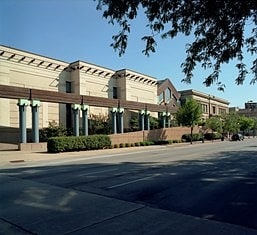
Museum in Cedar Rapids, Iowa. The Cedar Rapids Museum of Art is a museum in downtown Cedar Rapids, Iowa, United States. The museum is privately owned and was established in 1905. The museum acquired the old Cedar Rapids Public Library building after the library moved into a new location in 1985. The current home of the museum, designed by post-modern architect Charles Moore, was built adjoining the old library in 1989.
The mission of the Cedar Rapids Museum of Art is to excite, engage, and educate its community and visitors through its collection, exhibitions and programs.[1]
Address: 410 3rd Ave SE, 52401 Cedar Rapids
Mays Island
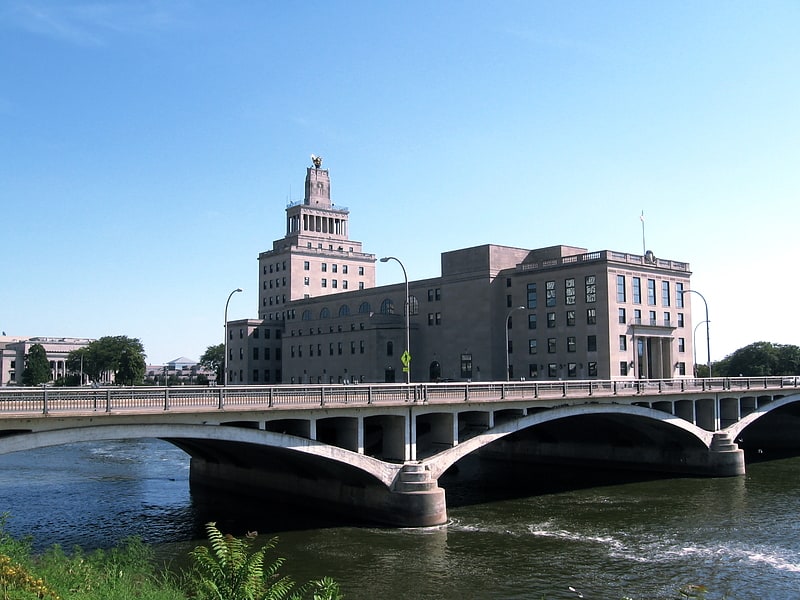
Island in Cedar Rapids, Iowa. May's Island is a small island on the Cedar River, in Cedar Rapids, Iowa. Functioning as a civic center much like the Île de la Cité, it is the site of the Memorial Building, the Linn County Courthouse, and the county jail. The island plus an adjacent block was listed as a historic district on the National Register of Historic Places in 1978.
The island and all of its buildings were devastated by the 2008 flood of the Cedar River, with water reaching above the first floors.
Until the 2008 flood, the concentration of local and county government on the island served to unify the city on both sides. The Memorial Building was designed by Hunter & Hatton, architects of Cedar Rapids. The Beaux Arts-style Linn County Courthouse was designed by Joseph Royer, of Urbana, as was the county jail. The building masses are long and narrow, like the island itself. The buildings face each other, creating an "insular quality".
The concentration of government services extends to the east bank, where the Federal government is located, to the east of the Memorial Building, in the Beaux Arts-style Federal Building, whose design is credited to the Office of the Supervising Architect under James A. Wetmore. Its block, from 1st Avenue north to 2nd Avenue, from 1st Street west to the river, is also included in the historic district. This makes a total of four contributing buildings in the district.[2]
Paramount Theatre
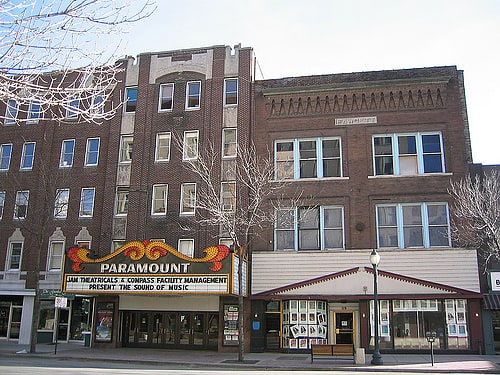
Theater in Cedar Rapids, Iowa. The Paramount Theatre is a 1,693-seat Cedar Rapids, Iowa. It was individually listed on the National Register of Historic Places in 1976. In 2015 it was included as a contributing property in the Cedar Rapids Central Business District Commercial Historic District.
The theater is a restored example of a vaudeville/movie palace of the 1920s. It was damaged by the flood of June 2008, which submerged most of downtown Cedar Rapids.
The Paramount serves as home to Orchestra Iowa, the Cedar Rapids Area Theater Organ Society, and a series of Community Concerts. It is famous for its restored Wurlitzer theater organ, which could be lifted up from below stage level when used. The Paramount is included in the National Register of Historic Places.[3]
Address: 123 3rd Ave SE, 52401-1403 Cedar Rapids
Brucemore
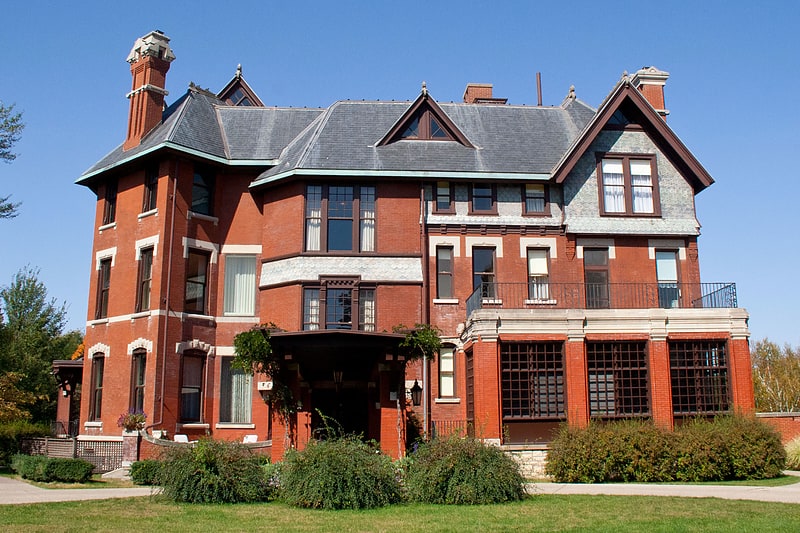
Museum in Cedar Rapids, Iowa. Brucemore, a park-like, 26-acre estate in the heart of Cedar Rapids, Iowa, is the site of a Queen Anne-style mansion, formal gardens, a children's garden, night garden, pond, orchard, and woodland. Built between 1884 and 1886 by Caroline Sinclair, widow of pioneer industrialist T.M. Sinclair, Brucemore has been home to three prominent families who used the estate as a center for culture and the arts. Brucemore, whose name alludes to the Scottish moors of the second owner's ancestral home, is Iowa's only National Trust Historic Site and is preserved by the National Trust for Historic Preservation in co-stewardship with Brucemore, Inc. Under the name of the T.M. Sinclair Mansion, it is listed on the National Register of Historic Places. The mansion has three stories, and contains twenty-one rooms. Distinctive features include a steeply gabled roof, five chimneys, and several turrets.[4]
Address: 2160 Linden Dr SE, 52403-1736 Cedar Rapids
African American Museum of Iowa
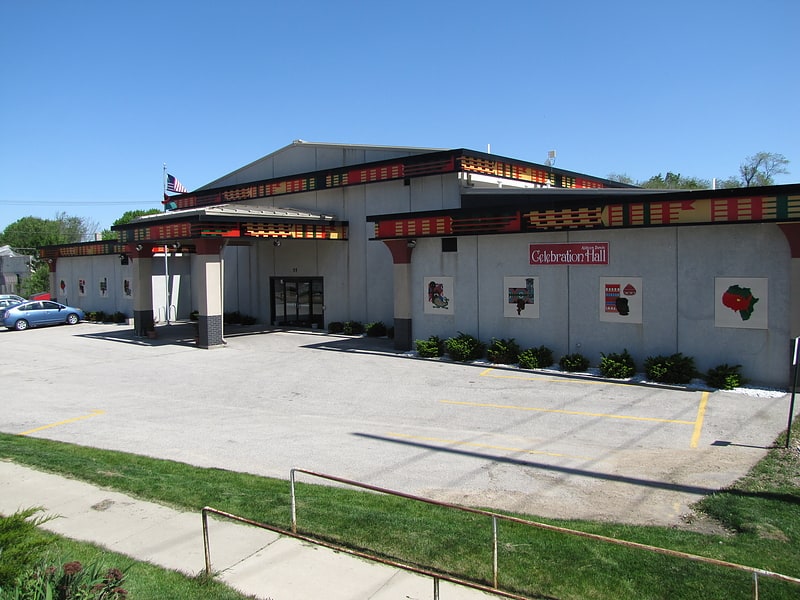
Museum in Cedar Rapids, Iowa. The African American Museum of Iowa, nestled along the Cedar River near downtown Cedar Rapids, Iowa, United States, has been carrying out its mission “To preserve, publicize, and educate the public on the African American heritage and culture of Iowa” since its incorporation as a 501 organization in 1994. It has become the leading educational resource on African American history in Iowa and has two on-site exhibits: a permanent exhibit called Endless Possibilities, and the 2017 temporary exhibit – If Objects Could Talk. Additionally, the AAMI has several "traveling exhibits" that are available free of charge for use by schools, libraries, businesses, etc.
In 2011, the AAMI served over 52,000 people, offering tours, educational programming for all ages, special events, a summer camp, and much more across the state of Iowa.[5]
Address: 55 12th Ave SE, 52401-2202 Cedar Rapids
Iowa Masonic Library and Museum
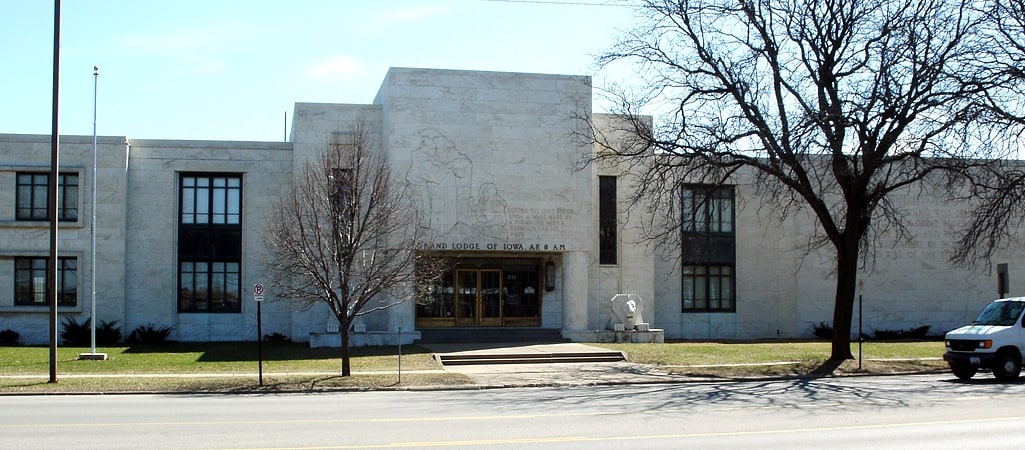
Museum in Cedar Rapids, Iowa. The Iowa Masonic Library and Museum, located at 813 First Ave. SE, in Cedar Rapids, Iowa, United States, is one of the largest Masonic libraries in the world and incorporates at least three museum collections. The library was the first, worldwide, to have its own building. Its current building also houses the administrative offices for the Grand Lodge of Iowa, one of the governing bodies for Freemasonry in Iowa.[6]
Address: 813 1st Ave SE, 52402-5001 Cedar Rapids
First Avenue Bridge
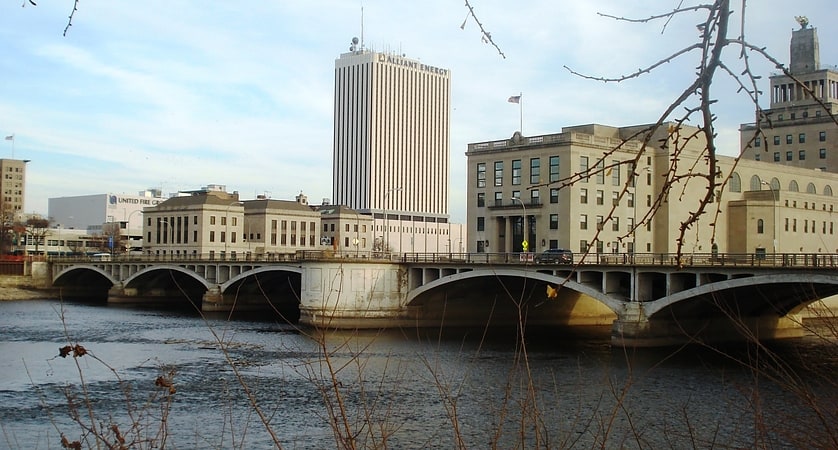
Bridge in Cedar Rapids, Iowa. The First Avenue Bridge is a historic structure located in downtown Cedar Rapids, Iowa, United States. It carries U.S. Route 151 for 697 feet over the Cedar River. The original six-span concrete arch structure was completed in 1920 for $420,000. It was designed by Marsh Engineering Company and built by Koss Construction Co. both of Des Moines. Consulting engineer Ned L. Ashton of Iowa City designed the 1960s remodel. He had all of the concrete work above the original arches torn out and the bridge rebuilt as an open-spandrel structure. The rebuild also included a wider deck to accommodate increased traffic and aluminum railings. While the bridge's original structural integrity has been compromised, this is the first notable concrete spandrel arch reconstruction in Iowa and possibly in the country. The bridge was listed on the National Register of Historic Places in 1998.[7]
NewBo City Market
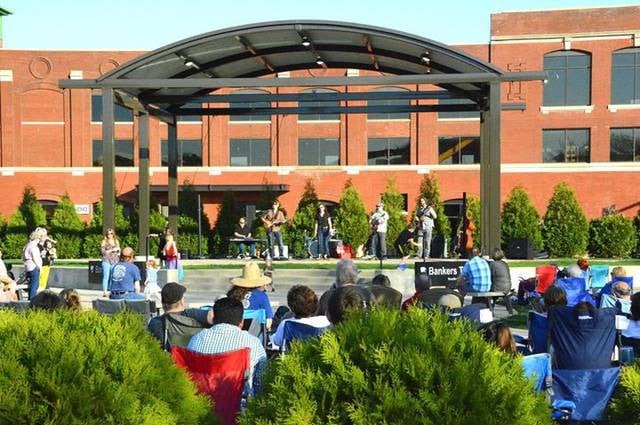
Market, Shopping, Flea market
Address: 1100 3rd St SE, 52401-2306 Cedar Rapids
Bohemian Commercial Historic District
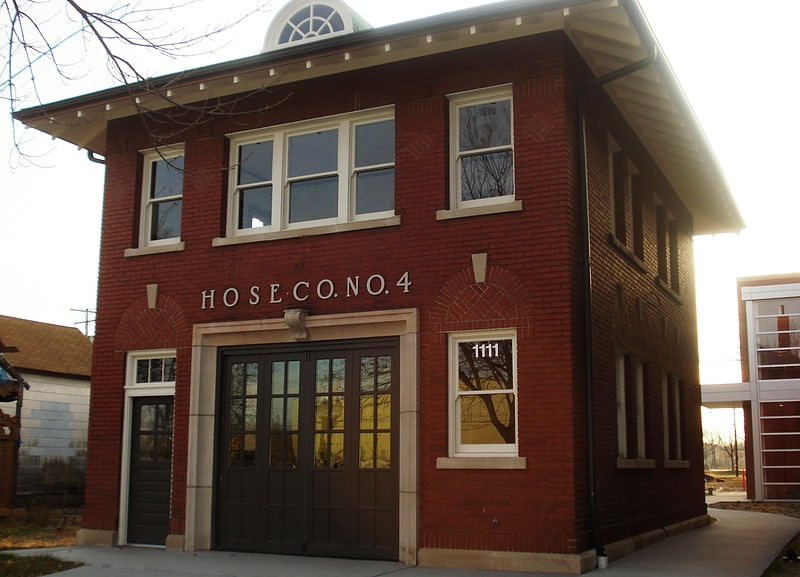
The Bohemian Commercial Historic District, also known as New Bohemia, is located in Cedar Rapids, Iowa, United States. It was listed on the National Register of Historic Places in 2002. At the time of its nomination it consisted of 75 resources, which included 48 contributing buildings, and 27 non-contributing buildings. Bohemian immigrants began settling in Cedar Rapids in the 1850s, and increasingly after the American Civil War in the 1860s and the Austro-Prussian War in 1866. They grew to be the largest ethnic group in the city, and the only one to settle in a distinct part of Cedar Rapids. They settled along the Cedar River between the downtown area and the T.M. Sinclair and Company meat packing plant. The buildings in the district were constructed between the 1880s and the 1930s. They are largely narrow-front commercial buildings and corner blocks. The buildings housed a variety of commercial establishments: a movie theater, two banks, and several filling stations. It also includes a railroad corridor factory building, a fire station, and fraternal halls. The buildings are representative of various commercial architectural styles and vernacular building forms popular at the times they were built. The Lesinger Block and the C.S.P.S. Hall are individually listed on the National Register of Historic Places.[8]
Indian Creek Bridge
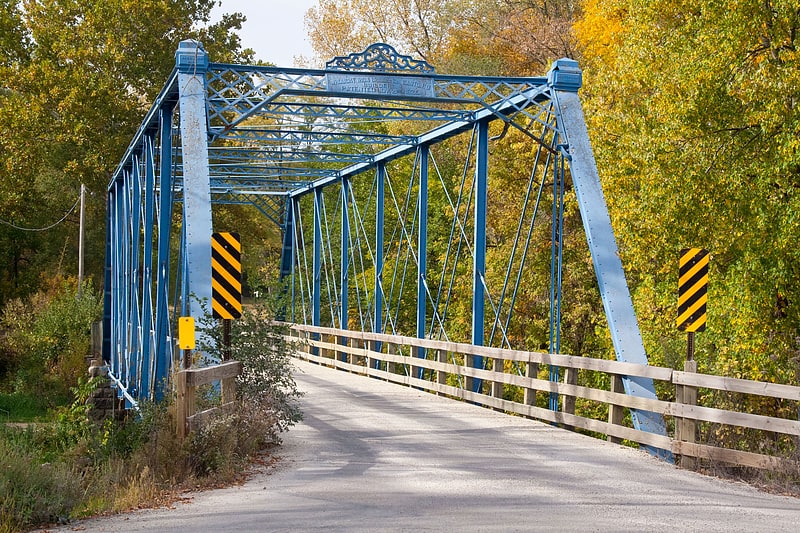
Bridge in Cedar Rapids, Iowa. The Indian Creek Bridge is a wrought iron bridge, built about 1880 to the east of Cedar Rapids, Iowa. The bridge crosses a tributary of the Cedar River in Linn County. It was designed and built by the Wrought Iron Bridge Company of Canton, Ohio as an eight-panel pin-connected through truss in an unusual double-intersection Pratt design.
The overall span measures 115 feet (35 m), carrying a 15.58-foot (4.75 m) wide roadway. Including the approach spans, the bridge has a total length of 191 feet (58 m). The bridge rests on stone piers and abutments, with timber pile piers and abutments supporting the timber stringer approach spans. The bridge deck is timber, laid perpendicular to the span. The bridge features decorative cresting and lattice lateral bracing. The truss uses rigid horizontal and vertical members and rod bracing for the diagonals.
The Indian Creek Bridge was placed on the National Register of Historic Places on May 15, 1998.[9]
Address: 5300 Otis Rd SE, 52403 Cedar Rapids
Peoples Savings Bank
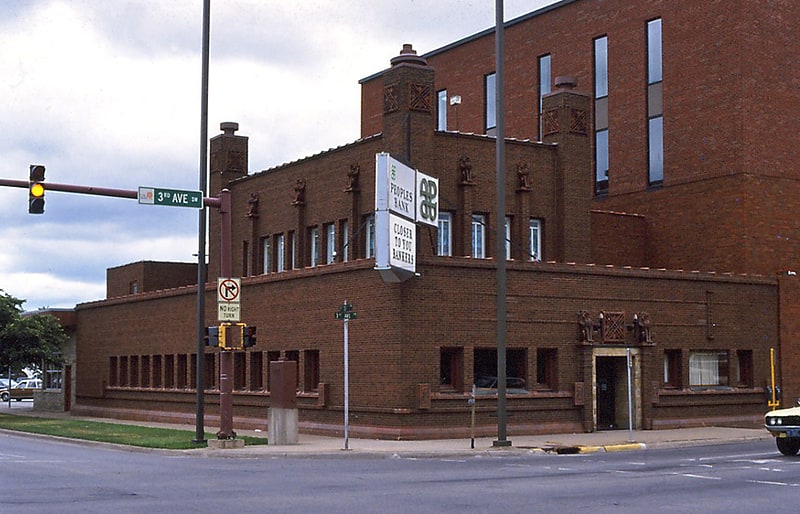
Bank in Cedar Rapids, Iowa. The Peoples Savings Bank in Cedar Rapids, Iowa, was designed by Louis Sullivan. It was the second of a number of small "jewel box" banks in midwest towns designed by Sullivan during 1907 to 1919. It was built in 1911, and it was individually listed on the National Register of Historic Places in 1978. In 2014 it was included as a contributing property in the West Side Third Avenue SW Commercial Historic District.[10]
Mother Mosque of America

Mosque in Cedar Rapids, Iowa. The Mother Mosque of America, once known as The Rose of Fraternity Lodge, in Cedar Rapids, Iowa, United States, is the oldest standing purpose-built mosque in the United States, having been completed in 1934. The Al-Sadiq Mosque in Chicago and the Powers Street Mosque are older by a decade but were converted from existing buildings to be used as a Muslim house of worship.
The oldest purpose-built mosque was formerly a mosque near Ross, North Dakota, which fell into ruin. A smaller mosque was built near that site to commemorate its history in 2005. The praying direction in these mosques are and will always be south East. It is the shortest distance traveled to the Kaaba.[11]
Address: 1335 9th St NW, 52405-1805 Cedar Rapids
St. Paul United Methodist Church
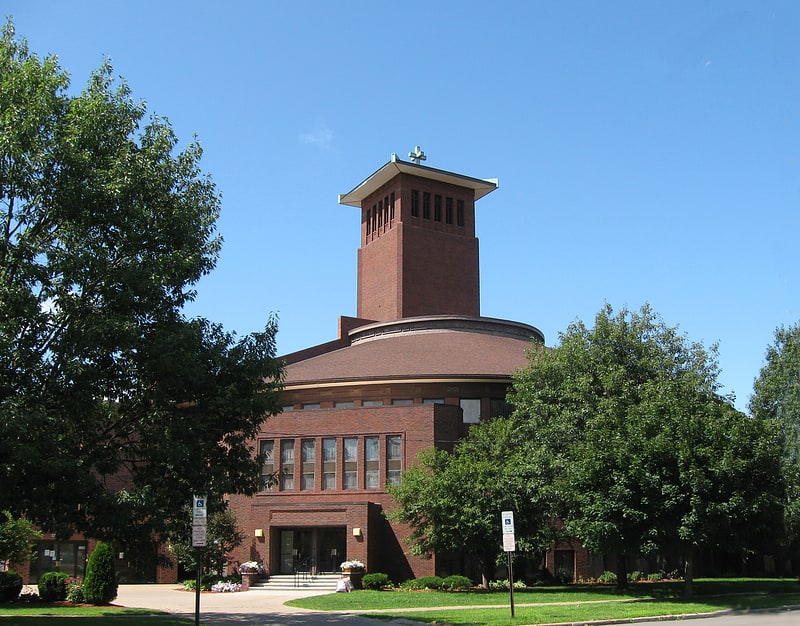
Building in Cedar Rapids, Iowa. St. Paul's United Methodist Church is located in downtown Cedar Rapids, Iowa, United States. The Louis Sullivan-designed building has been individually listed on the National Register of Historic Places since 1985. In 2000 it was included as a contributing property in the Second and Third Avenue Historic District.[12]
Address: 1340 3rd Ave SE, 52403-4019 Cedar Rapids
Linn County Courthouse
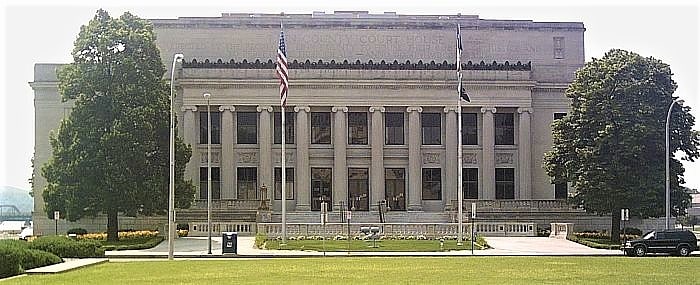
Building in Cedar Rapids, Iowa. The Linn County Courthouse is located on May's Island in the middle of the Cedar River in Cedar Rapids, Iowa, United States. It, along with the Veterans Memorial Building and two other buildings, is a contributing property to the May's Island Historic District that was listed on the National Register of Historic Places in 1978. The courthouse is the third building the county has used for court functions and county administration.[13]
Bethel AME Church
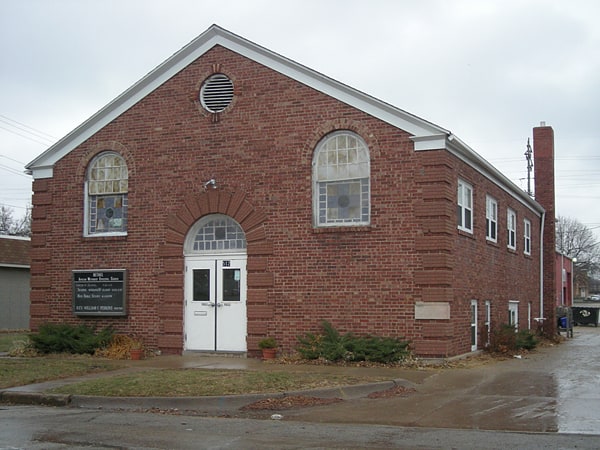
Methodist church in Cedar Rapids, Iowa. Bethel African Methodist Episcopal Church is located in Cedar Rapids, Iowa, United States. The congregation was established in either 1870 or 1871, which makes this the oldest historically African American church in the city. It had 23 pastors from its inception to 1928, which followed the African Methodist Episcopal Church's practice of itinerant pastors. The congregation grew slowly over this same period. Many African Americans came to Cedar Rapids after the coal industry in Southern Iowa began to collapse. The Rev. Benjamin Horace Lucas, who became pastor here in 1928, was also a catalyst for growth in the congregation. Completed in 1931, this brick Colonial Revival structure replaced a wood-frame structure from 1876. Since its completion, it has served the social and religious needs of the community. It is one of the few surviving links to Cedar Rapid's early African American community as this neighborhood has been nearly obliterated by the development of Mercy Medical Center. The church building was listed on the National Register of Historic Places in 2013.[14]
Address: 512 6th St SE, Cedar Rapids
St. James United Methodist Church
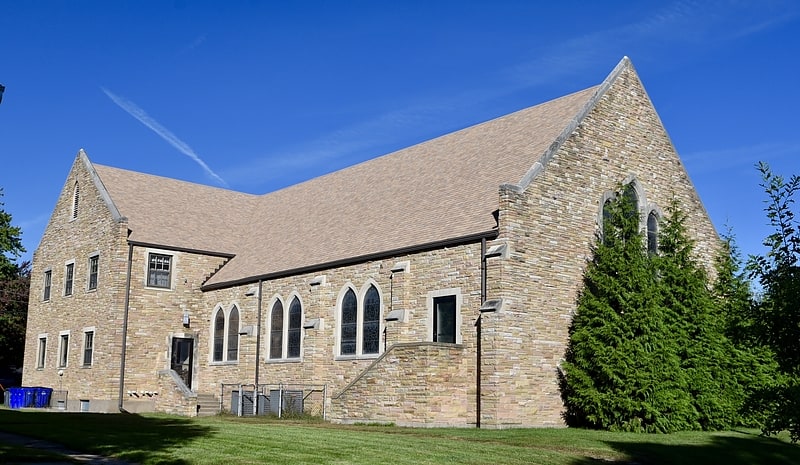
United methodist church in Cedar Rapids, Iowa. St. James United Methodist Church is located in Cedar Rapids, Iowa, United States. The congregation began as a Sunday school in the northwest part of the city organized by Trinity Methodist Episcopal Church. The evangelist Billy Sunday had preached a revival there and over 300 people joined the church. St. James Methodist Episcopal Church, as it was then known, was established shortly afterward in February 1910. The congregation originally used the closed Danish Lutheran Church at K Avenue NW and Fourth Street NW for their services, and they moved the building that summer to Ellis Boulevard NW. St. James grew to the point that a new building was needed. In 1945 property across the street was purchased, and local architect William J. Brown designed the new church facility. Construction began in September 1952 and it was completed in April 1954 for $165,000.
The church building is a modern interpretation of the Gothic Revival style. The gabled-ell form structure houses the sanctuary, administrative, educational and social spaces. Brown utilized the Interdenominational Bureau of Architecture's guide Planning Church Architecture: Designs, Floor Plans and Recommendations to Help in Planning Church Buildings for Worship, Religious Education, and Fellowship Activities to Cost from $30,000.00 to $850,000.00 (1945) for the basis of his work. The exterior is composed of Tennessee quartzite stone with Bedford stone trim. T. Marion Jones built the wooden furnishings and Universal Art Glass Studios of Winona, Minnesota created the stained glass windows. The sanctuary has a seating capacity of 300, and there are 16 classrooms in the building. It received some damage in a 2008 flood that allowed the gymnasium to be returned to its original use after having been converted into office space. The building was listed on the National Register of Historic Places in 2015.
In July 2015 St. James UMC and Trinity UMC entered into a Cooperative Parish agreement. The idea was to combine their ministry efforts to better serve the community. They shared a pastor and their resources. Services were held at 9:00 AM at St. James and 10:30 AM at Trinity. A leadership council was formed to get input from both congregations. In 2016 several listening sessions were held with both congregations to find out what the congregations wanted to see of their future together. In May 2017 a vote was held at both churches regarding the merger of the two congregations into one. The vote was unanimous at both churches in favor of a merger. On Jun 4, 2017 a church conference was held, led by District Superintendent Rev. Kiboko Kiboko. At that time St. James United Methodist Church and Trinity United Methodist churches ceased to be, and the new congregation of Trinity-St. James United Methodist Church was formed.[15]
Address: 1430 Ellis Blvd NW, 52405-1716 Cedar Rapids
Cedar Rapids Post Office and Public Building
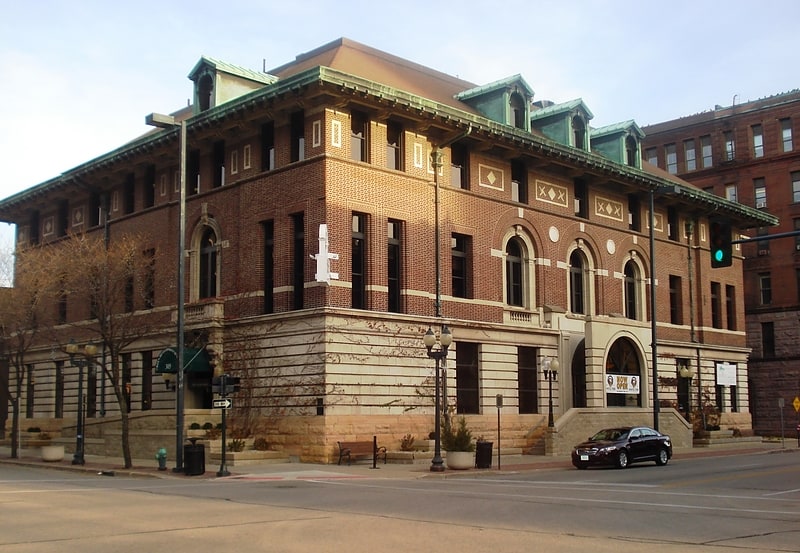
Historical landmark in Cedar Rapids, Iowa. The Cedar Rapids Post Office and Public Building, also known as the Witwer Building, is an historic building located in downtown Cedar Rapids, Iowa, United States. It was individually listed on the National Register of Historic Places in 1982. In 2015 it was included as a contributing property in the Cedar Rapids Central Business District Commercial Historic District.[16]
Veterans Memorial Building & Commission
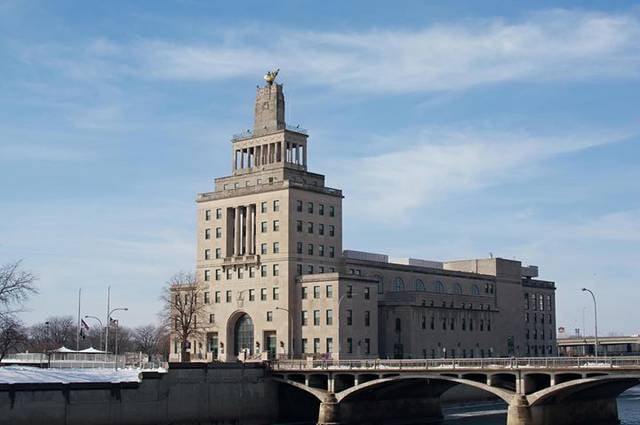
Museum, Memorial
Address: 50 2nd Avenue Bridge, Cedar Rapids
Cedar Rapids Scottish Rite Temple
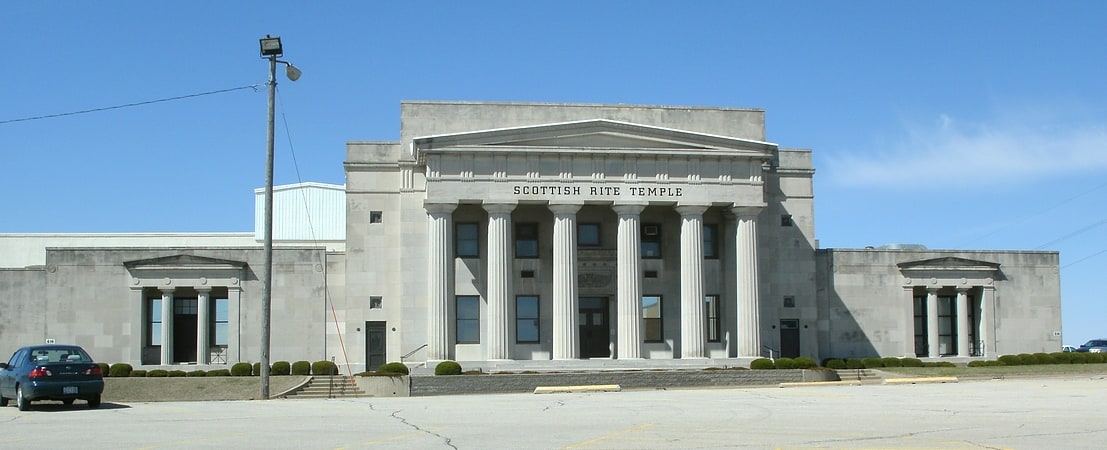
Event venue in Cedar Rapids, Iowa. The Cedar Rapids Scottish Rite Temple, also known as the Scottish Rite Masonic Center, is a historic building located at 616 A Avenue, Cedar Rapids, Iowa. It is listed on the National Register of Historic Places as Consistory Building No. 2
Its 100th anniversary was celebrated by the Grand Lodge of Iowa as an event in 2010. The building's auditorium, dining facilities and kitchens can be rented by the public for weddings and other events.
The building is in the Classical Revival style, and was listed on the National Register in 1998. It was designed by noted Pennsylvania architect Henry Hornbostel and built by Loomis Bros. Construction in 1927. Loomis Bros. also built the NRHP-Listed Ausadie Building in Cedar Rapids.
It was built in 1927, attached to a 1910 building which is hidden from view from the front.[17]
Address: 616 A Ave NE, Cedar Rapids
First Universalist Church of Cedar Rapids

The First Universalist Church of Cedar Rapids, also called the Peoples Church Unitarian Universalist is listed on the National Register of Historic Places. Built in 1875, it served the Unitarian Universalist community of Cedar Rapids, Iowa, USA, for more than 135 years. Because of the high cost of upkeep and diminishing membership, the congregation voted to sell the building and grounds in May 2010. It was demolished in October 2011.[18]